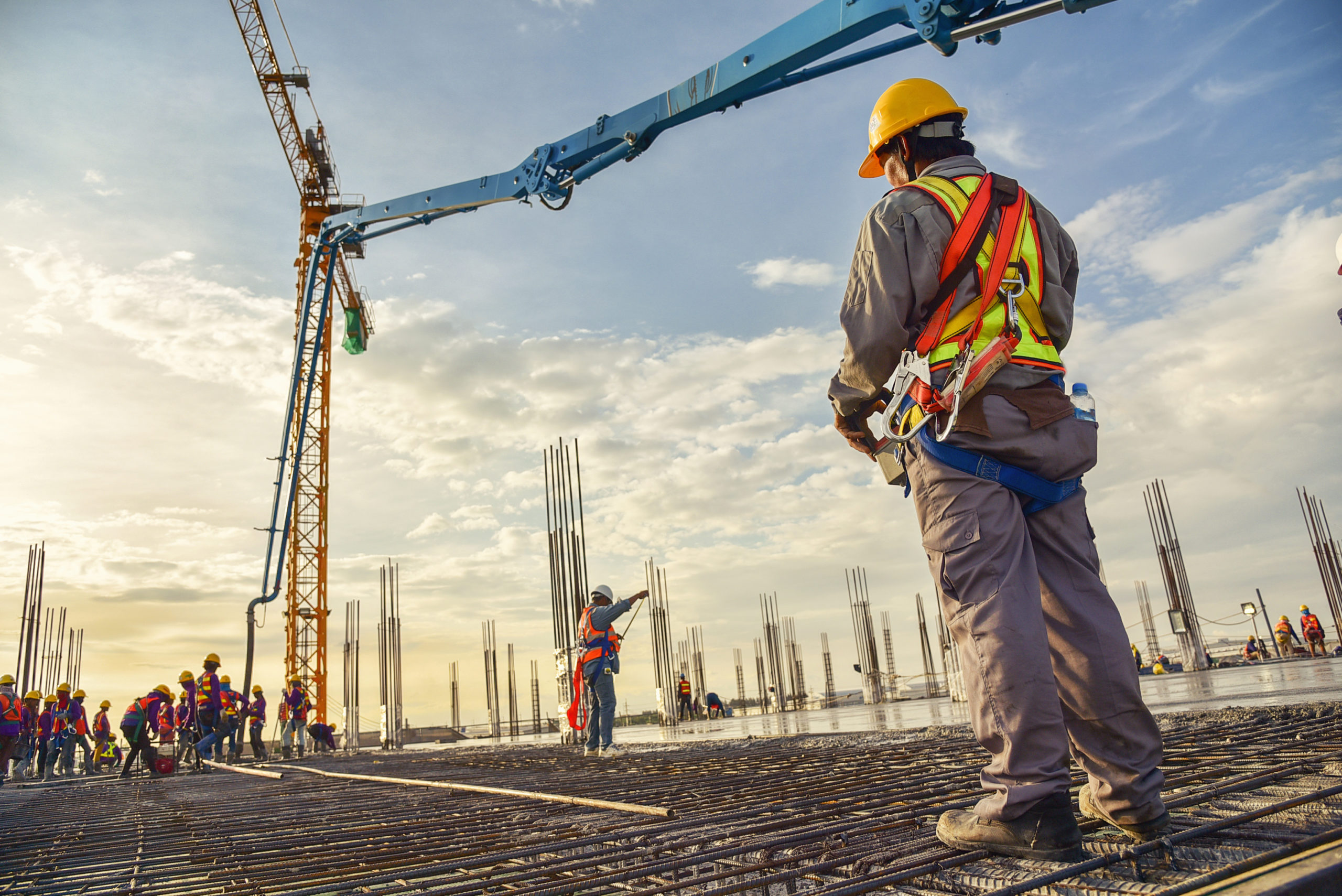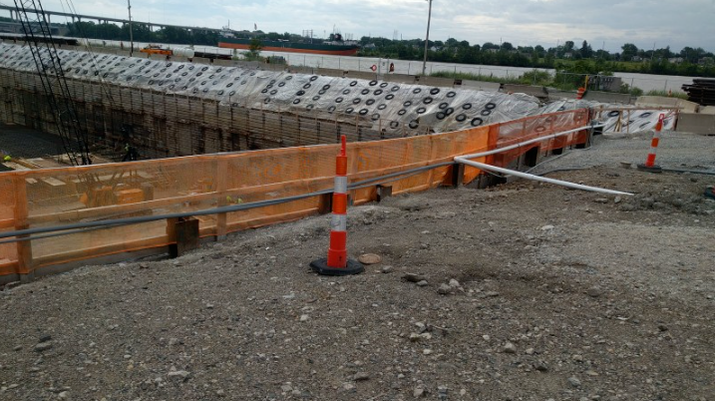Experienced Geotechnical Geologist for In-Depth Ground Investigations
Experienced Geotechnical Geologist for In-Depth Ground Investigations
Blog Article
Just How Consulting Engineers Enhance Geotechnical Engineering Projects: Insights Into Their Proficiency, Methods, and Collaborative Approaches
Consulting engineers are pivotal in improving geotechnical engineering jobs, using their specialized understanding to browse the complexities of subsurface problems. Their methodologies encompass a variety of website investigation strategies, including Requirement Infiltration Tests (SPT) and Cone Infiltration Examinations (CPT), which educate critical choices during the style and construction stages. Additionally, their collaborative strategies foster interaction among varied job stakeholders, ultimately forming the project's trajectory. As we take a look at the complex functions these professionals play, it ends up being clear that their payments prolong beyond technological competence, prompting a more detailed check out the implications for project success.
Function of Consulting Engineers
The proficiency of seeking advice from designers in geotechnical engineering is fundamental to the effective implementation of building and construction projects. These experts play an essential duty in evaluating soil and rock residential properties, which are essential elements affecting design and construction choices. By conducting extensive site examinations, getting in touch with designers accumulate important data that notifies the design process, making sure jobs are constructed on secure and appropriate ground.
Consulting designers additionally supply important insights right into threat management (geotechnical geologist). They recognize possible geotechnical dangers, such as landslides, soil liquefaction, and settlement problems, making it possible for stakeholders to apply efficient mitigation approaches. Their knowledge aids in maximizing foundation styles, which can lead to considerable cost financial savings and boosted safety
In addition, consulting designers act as a vital link between job proprietors, designers, and contractors. Their ability to equate complex geotechnical data right into actionable suggestions cultivates cooperation and helps with educated decision-making throughout the project lifecycle. This multidisciplinary approach not only enhances project effectiveness yet also makes sure conformity with regulative standards and best methods.
Secret Methodologies in Geotechnical Engineering

One key approach is site investigation, which entails performing field examinations and research laboratory evaluations to gather data on subsurface problems. Methods such as Requirement Penetration Testing (SPT) and Cone Penetration Testing (CPT) are extensively utilized to review soil stratigraphy and stamina. Additionally, geophysical techniques, including seismic and electrical resistivity surveys, offer non-invasive ways to analyze subsurface features.
An additional critical method is mathematical modeling, which makes it possible for designers to replicate numerous scenarios and predict exactly how soil-structure communications will certainly behave under different loading problems. Limited Element Analysis (FEA) is a typical approach utilized in this context.
In addition, the layout of foundations, retaining frameworks, and earthworks relies greatly on these methods - geotechnical geologist. By incorporating sophisticated logical devices with field information, getting in touch with engineers can create tailored services that resolve particular project obstacles, inevitably adding to the stability and safety of building jobs
Significance of Soil Analysis
Soil evaluation works as a fundamental aspect in geotechnical engineering, providing essential understandings into the physical and chemical residential or commercial properties of dirt necessary for reliable construction preparation. Understanding important site dirt qualities is important for determining its load-bearing capability, water drainage actions, and potential for negotiation or instability. Thorough soil examinations, consisting of sampling and research laboratory screening, help identify specifications such as soil kind, wetness web content, thickness, and shear stamina.
These analyses educate the selection of appropriate building and construction strategies and products, eventually affecting job safety and security and durability. Cohesive dirts might call for various structure styles contrasted to granular soils, demanding customized engineering remedies. In addition, soil evaluation aids in determining pollutants that could present dangers to human wellness or the atmosphere, enabling the development of reduction methods.
Incorporating soil evaluation into the beginning of project growth aids to lessen unexpected obstacles, guaranteeing that designers can anticipate and address potential concerns before they escalate. By establishing a detailed understanding of the site problems, consulting designers can maximize style efficiency and lower expenses, thus boosting the overall success of geotechnical design jobs.
Joint Approaches in Projects
Effective geotechnical projects usually depend upon collective techniques that bring with each other varied proficiency from numerous disciplines. Efficient cooperation amongst speaking with designers, rock hounds, environmental scientists, and building and construction specialists is essential for resolving intricate obstacles and enhancing project results. By leveraging the special skills and expertise of each employee, tasks over here can gain from a holistic understanding of the website conditions, regulatory demands, and engineering restrictions.
Normal interaction and interdisciplinary conferences help with the sharing of understandings and cultivate a society of team effort. These joint initiatives make it possible for the recognition of possible dangers early in the project lifecycle, enabling timely mitigation methods. Moreover, integrating responses from stakeholders, consisting of neighborhood areas and regulative firms, guarantees that all viewpoints are taken into consideration, boosting job approval and compliance.
In addition, the integration of sophisticated technologies, such as Geographic Info Equipment (GIS) and Building Information Modeling (BIM), more boosts partnership. These devices permit for the real-time sharing of data and visualization of geotechnical conditions, advertising notified decision-making. Ultimately, a collective technique not only simplifies task implementation yet likewise lays the foundation for innovative remedies to intricate geotechnical engineering challenges.
Influence on Job Outcomes

Consulting designers employ innovative approaches such as risk evaluation and anticipating modeling, which enhance the precision of project projections. Their ability to incorporate ingenious technologies, like geotechnical instrumentation and look at this now information analytics, even more fine-tunes the layout and building processes. Consequently, tasks experience enhanced effectiveness, minimized expenses, and decreased hold-ups.
Moreover, fostering effective communication and collaboration among staff member boosts analytic capacities. When challenges emerge, a joined front permits swift recognition of remedies, stopping prospective problems. Ultimately, the collective initiatives of consulting designers contribute to higher quality end results, making certain that tasks satisfy both regulative criteria and client assumptions.
Conclusion

Report this page